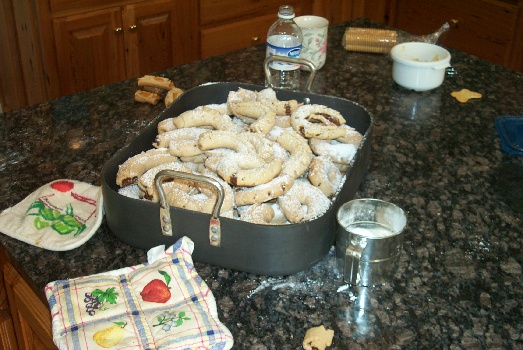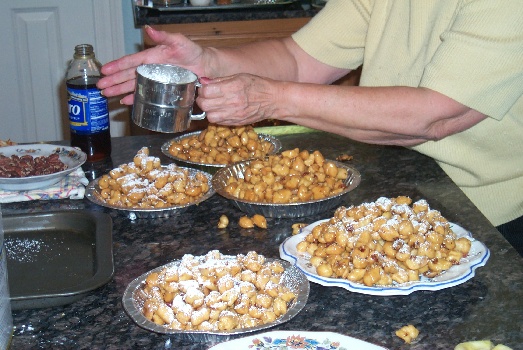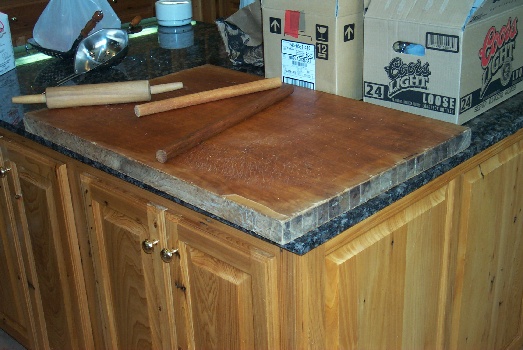

 | 
|
In Italy, Christmas baking has always been a very intimate venture involving groups of family or neighbors. Considering the complexity of the recipies and the massive number of cookies produced, you can understand why a crowd is helpful. Every region or town may have its own specialties and Ustica is no exception. Cassateddi and Gigi are two examples that are local to Ustica. The uninformed layman would call them Italian fig cookies and pinolatas, as a wince of disapproval rises from the injured cook's face. As you'll see there are some significant differences which make Cassateddi and Gigi unique to Ustica and a source of great pride for Usticesi cooks. To complicate matters further, every Usticese cook has their own variations on the recipes. As Maria tells it, when you get 2 cooks together the first thing decided is "Are we going to do it your way or my way?". The affair then proceeds with lots of eye-rolling and mumbled comments. Recipes changed again as Usticesi came to America and some ingredients became difficult to obtain.
One great example of a process lost in America is the sticky goo that coats the Gigi. Traditionally in Ustica, this is made from must, the juice of freshly pressed grapes. The must is boiled to create a thick, sweet liquid and ashes (from the prickly pear stalks that were burnt to cook the skins) are added to remove any cloudiness and render the liquid clear. Cooking with ashes seemed a little odd to me too, but I'm told the resulting liquid has a unique sweet, slightly-smoky flavor. At harvest time in September, the liquid is tickened to a gelatinous texture and spooned out into individual candies called Mostarda. This is still done in Ustica. In our Gigi recipe we will use dark corn syrup instead and I've heard that a more recent trend is to include honey with the Caro syrup.
So let's begin..

| Here's our crew - Maria Compagno (our master chef), Marilyn Barbera, Barbra Zelenka (our gracious host), Chris and Libby Caravella, and Virginia Edmondson. We started at 11 am and were finished at about 4 pm. We did not make a massive amount so be forewarned that this is usually an all day affair. The filling for the Cassateddi can be prepared up to a week in advance. |
| Marilyn did most of the shopping at Nor-Joe's just off Metairie Road at the railroad tracks (505 Frisco Av). Nor-Joe's imports a lot of food products directly from Italy. Any organic grocery store like Whole Foods or World Market should also carry these ingredients. I even noticed that Save-A-Center carries a brand of nuts and dried fruits called Melissa's. In this photo we have marmalade, 2 containers of raisins (passoli) soaking in water, and in the foreground some candied (crystallized) orange and lemon rind and blanched whole almonds. |  |
 | 
|
Maria provided most of the tools. The scanatura is actually an old door and the caneddo is a broom stick, both used for rolling out the dough. They both have a soft translucent glow from years of having dough worked on them. If you are using a newer surface for rolling, you may need to coat it with shortening first. The pinwheel cutters are used to make the edge of the Cassateddi and belonged to Maria's mother. These tools have great sentimental value and are a source of many family stories which are lovingly recalled throughout the day.
Click on the options below to get to the recipe pages. User your browser's back button to return to this page.
| CASSATEDDI | GIGI |